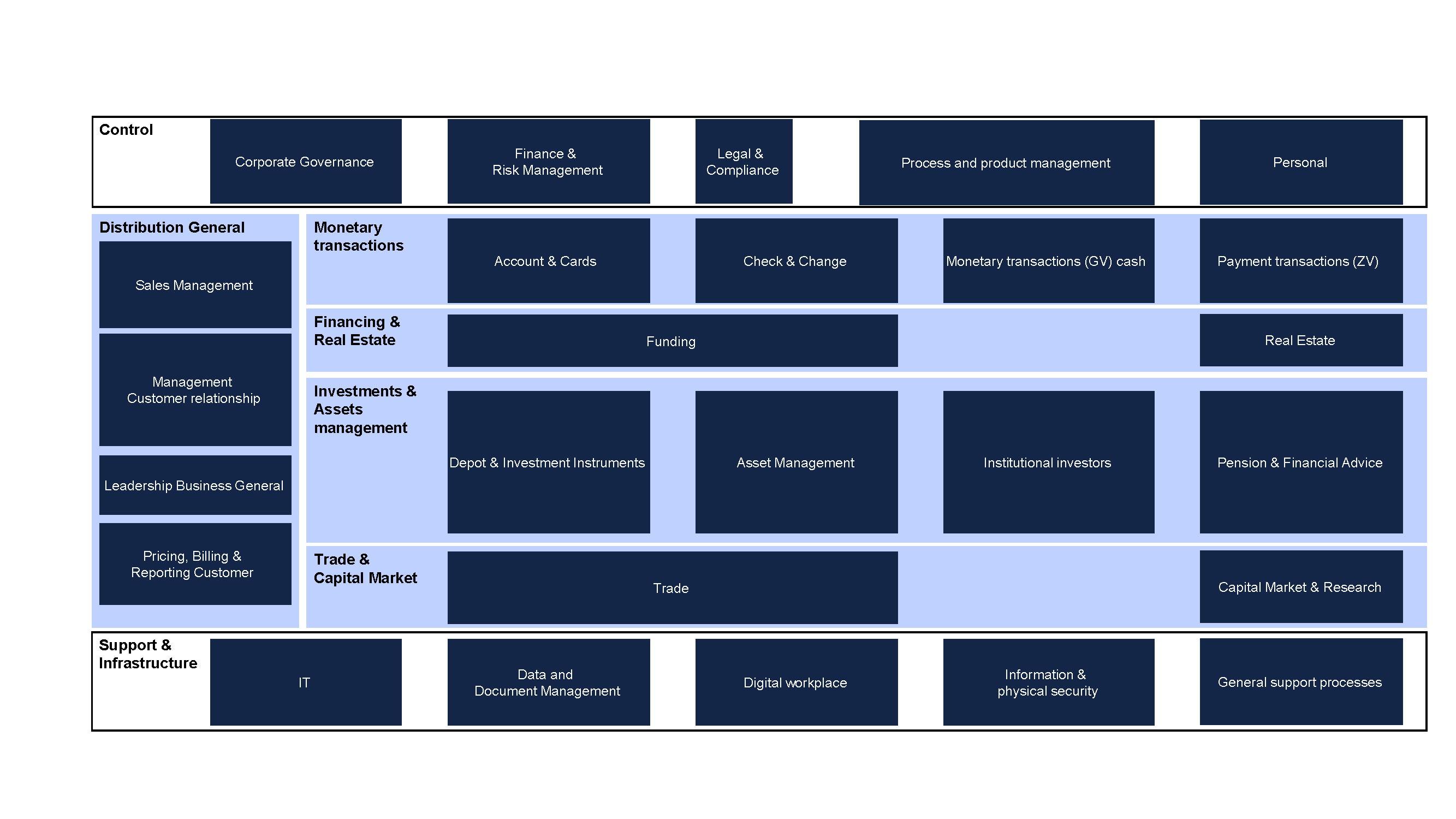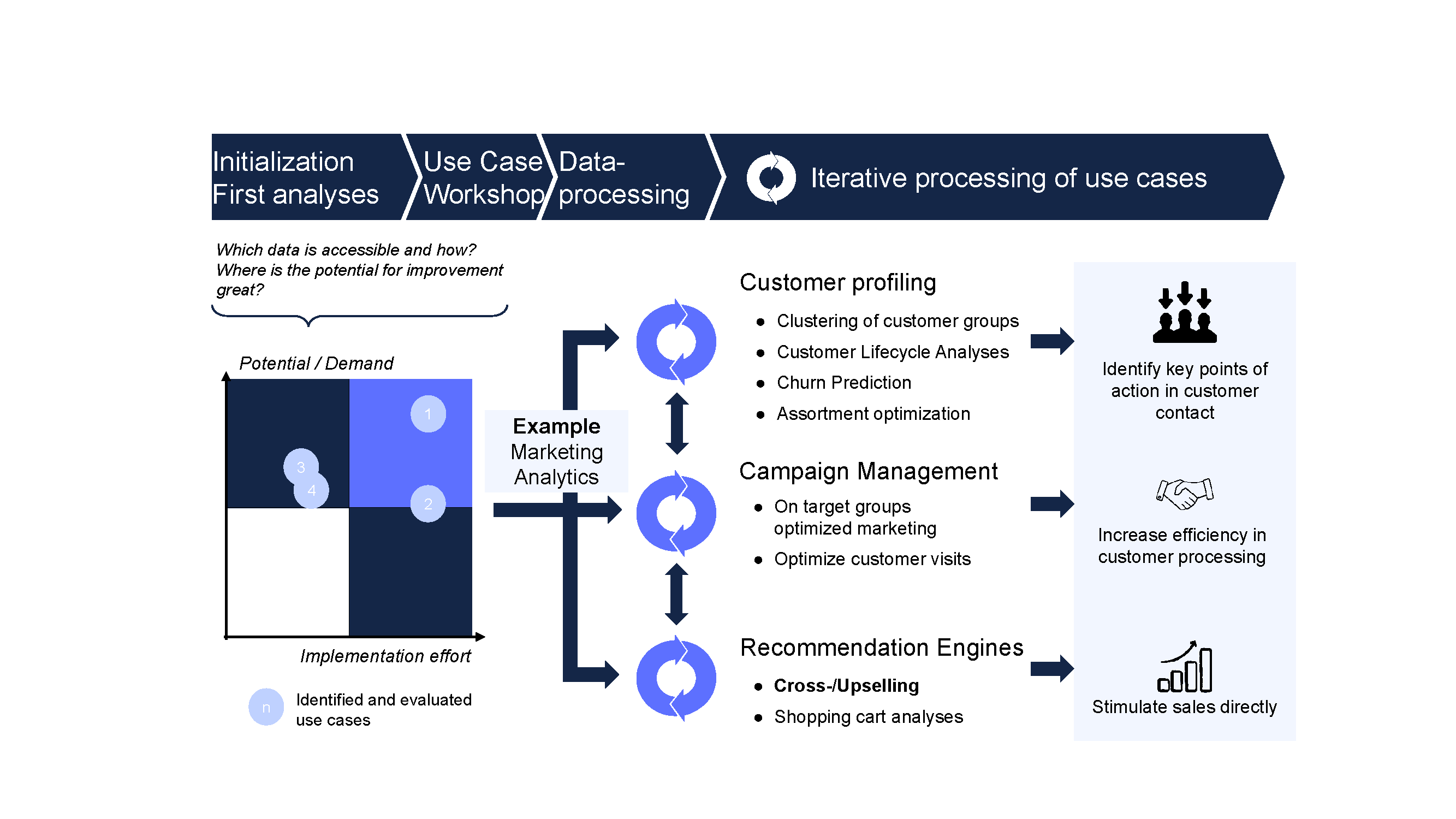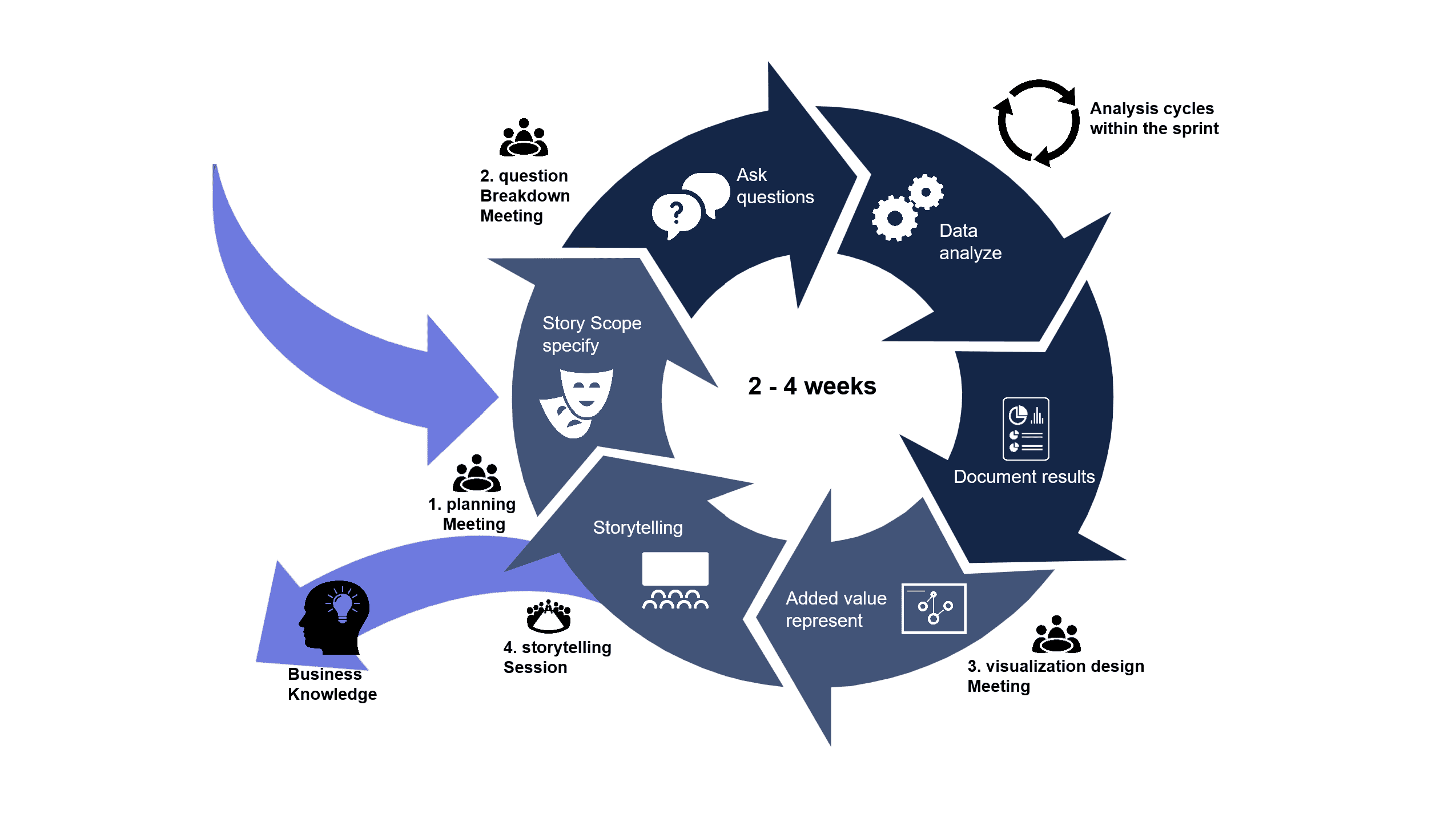Defining use cases correctly
The first step in deciding how to use data is to define a suitable use case. Many banks instinctively focus on the customer interface when searching for use cases. This is understandable, as they want to position themselves as an innovative institution with modern solutions. However, the ideal use cases are often found in other areas as well.
What is a use case?
A use case describes the way a user interacts with a system or product. Use cases are employed to set requirements, define the scope of a product or service, and limit risk. A use case can specify success or failure scenarios, as well as any critical variations or exceptions.
The Swiss Bankers Association (SBVg) lists various customer-oriented use cases in its guidelines on “Handling Data in Everyday Business”, where specific legal questions arise due to the analyzed customer data: artificial intelligence (AI) for compliance (Know Your Customer (KYC) & onboarding, transaction monitoring), credit assessment, trend analysis and benchmarking, biometric authentication, personalized offers and advisory services, as well as loyalty programs.
However, it is also worthwhile to consider other processes with potential for data analysis. Most banks have process maps, as illustrated here. Alternatively, reference models such as BIAN serve as useful guidelines.
Maintaining an open perspective helps to identify the most suitable applications for the entire organization.
Effective instead of “defective” use cases: When should caution be exercised?
In our experience, if a company is at the very beginning of its journey towards becoming a “data-driven company,” use cases with customer data are less suitable.
Use cases at the customer interface are often more complex than cases without direct customer interaction:
- The handling of customer data brings additional risks and, thus, requires mitigating measures.
- The issue of customer centricity is raised increasingly in product development. That’s why companies often test prototypes of products with end customers. However, many people are very sensitive when it comes to data processing. This raises the question of whether the still low maturity of the tested solutions reduces the desired marketing effect.

The Eraneos Use Case Identification Workshop: How should I use data?
To address the question “How should I use data?”, it helps to take a systematic approach. When introducing data analytics in companies, we often start with a potential workshop where we identify and evaluate all possible use cases.
In this workshop, there are no wrong ideas. We capture all topics and assess them based on potential and effort. The workshop should be as interdisciplinary as possible to cover the full diversity of the institution. In use case workshops, we deliberately consider all processes of a bank. Often, we find quick wins far from the front line (e.g., in operational or support processes) that deliver noticeably good results with minimal effort.
An ideal first use case quickly delivers measurable results and meets a concrete need of the respective business units. Only after identifying the use case should data preparation and analysis begin.
The example here illustrates how the “Compliance Analytics” area was identified in a use case workshop. Three fields of action were derived from it.

Six steps to a compelling use case: The roadmap to the use case
For the development of a previously identified use case, I recommend an iterative approach with the following six steps:

1. Define the Story Scope
An effective use case needs a story. Delimitation is key! During the planning meeting, the scope of the story should be defined quickly. Especially in the early phase, less is more. Start with a manageable scope that can be expanded later.
2. Ask Questions
The story is explored in depth during the Question Breakdown Meeting. What questions should the analyses answer? It is easy to get caught up in existing KPIs. Try to disregard them and consider other dimensions. For example, when analyzing the stability of an operations process, the focus is often on the end-to-end automation rate, the “Straight Through Processing” (STP) rate. However, the analysis could also go deeper, such as identifying steps where end-to-end processing fails, in order to assess whether a fundamentally different processing approach is needed.
3. Analyze Data
The questions are clear. Now, it is about finding answers in the data. At some point, you may encounter a missing data source for automated evaluation. In the first iteration of a “minimal viable product,” it may be sufficient to integrate a new data source as a static data source and address real-time integration at a later stage.
At this point, it also becomes evident that handling personal data is far more complex than use cases without sensitive data. If customer data is involved, it must be protected on a “need-to-know” basis, even in a prototype, including comprehensive authorization mechanisms.
4. Document Results
Once we have found and linked the data, we visualize it. It is crucial to always keep the original questions in mind, as they should be answered. In the Visualization Design Meeting, different perspectives come together: technical and business experts discuss the results with users.
5. Demonstrate Added Value
To establish value within the company, it is essential to highlight how the data analysis is applied. In which processes are analyses used? What benefits arise from them? Only in this way can the analyses become embedded in the organization.
6. Storytelling
On the journey to becoming a “data-driven company,” businesses must also consider change management. A new dashboard will not be used if users do not trust its content. In dedicated storytelling sessions, skepticism about data and analyses should be addressed, and the added value should be demonstrated.
Take-Away
Use cases for the application of data analytics can be identified quickly. However, to ensure integration within the organization, it is advisable to follow a prioritization process. Identify the use cases that offer the most attractive effort-to-benefit ratio. It is recommended to take the entire company into account, with a process map serving as a helpful guide.
The selected use case can then be detailed and implemented using the six steps outlined. This multi-stage approach ensures that data is used efficiently and creates sustainable value for the company. Especially for the first steps in handling data, it is advisable to start with simple applications—preferably without personal data.




